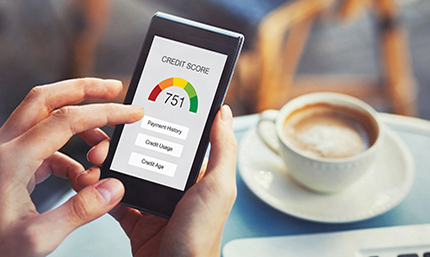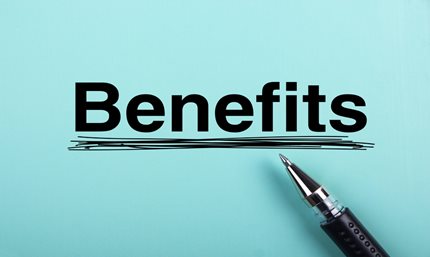News & Tips
Financial Peace: Pay Your Dues & Your Debts + Restore Hope in 5 Simple Steps

You probably won’t run into very many people who prefer not to feel at peace with their finances. Life is busy and stressful at times, and worrying about the next car payment or rent being due soon is nobody’s definition of an enjoyable time. Below are five simple steps to pay your dues and your debts and restore hope in obtaining financial freedom.
Step 1 – Define What Financial Peace Means to You
Financial peace is, in a sense, completely subjective, but most people can agree on some common terms that would mean financial peace to them. These include things like having money on hand in case of an emergency, being able to set up automatic payments without worry of an overdraft fee, and being able to pay off credit card debt. It’s important you determine what it means to you so that your plan will reach those goals. If you share your finances with a partner or spouse, it is critical to include them in this step so you can come to an agreement on a definition.
Step 2 – For Financial Peace of Mind, an Emergency Fund is a Must
Worrying about money, bills, and upcoming payments can take a toll on your health. In times of a financial emergency, the toll can increase if you are worried about the emergency itself and how you’re going to afford it. Set yourself up now for an inevitable emergency down the road. Having even $1,000 to fall back on could mean the difference between having the money readily available and not having to pay back interest on top of the amount owed. In 10 Tips to Improve Your Financial Wellness, you can learn more about how to start contributing to your emergency fund in small ways. This guide can help introduce you to the initial steps of financial peace, even if an emergency fund still seems daunting. The most important thing to remember about an emergency fund is no matter how small your contributions are at the beginning, you are still taking steps and making progress towards having that safety net. Even if that amount doesn’t cover the full expense, at least a portion of that safety net ready for when you may suddenly need it.
Step 3 – Evaluate Your Debt as a Whole and Make a Plan
As debt accumulates, it becomes more intimidating to try and tackle. It’s easy to turn a blind eye and continue in your ways, but this method will never achieve the financial peace you’re after. Start by listing every debt you owe (you can leave off your mortgage here), the amount owed, and the interest rate. Next, you’ll want to reorder the list by interest rate, starting with the highest and working your way down to the lowest. You’re already one step closer; you’ve created your priority list! It’s all about the small, progressive wins.
By paying off your highest interest rate debts first, you will begin to break the cycle of paying interest payments on top of the actual debt owed. As you begin to pay off your debts with high-interest rates, you will start to put more of your income towards the principal amount, which pays off debt much quicker. Another large benefit of your actions will be watching your credit score increase. Financial experts recommend keeping your credit utilization under 30%, and as you begin paying off your debts, you’ll start nearing that percentage. Many would agree that having a good credit score is beneficial, but we need to understand why. As your credit score increases, offers available to you in terms of new debt will be lower, allowing you not to repeat the vicious interest cycle. Learn more about other factors affecting your credit score and how to improve it in this article. You can also learn more about how to make a budget to cover your needs here.
Step 4 – Being Debt Free Isn’t Your Last Step to Financial Freedom
Having $1,000 in an emergency fund is a fantastic first step and can be crucial in not taking a step backward financially if something goes awry. Still, financial experts recommend having three to six months’ worth of living expenses saved in case of a layoff situation. This may seem out of reach, but remember, this step should be worked toward after you already have $1000 in your emergency fund and your debt paid down. This way, the funds that used to be allocated towards paying down debt can be redirected towards building up your savings account to cover expenses if needed.
To have the recommended three to six months’ worth of living expenses saved, you first need to know what that figure is. To calculate that amount, you will list out every debt you must pay each month. This would include housing expenses (rent or mortgage, utilities), transportation expenses (car payment, the average amount you pay for gas, car insurance), monthly average food expenses, medications, student loans, and others.
Now that you know your savings goal amount, you can see what work is still left to do. Rather than letting this deter you, take a calculated approach towards it. You can look at this goal from two perspectives. The first way is by having a date when you want to have put this amount in your savings and dividing that amount by the number of months until that date. The second way is by redirecting what you have been contributing towards debt each month and dividing the savings goal amount by this number to see how many months it will take you to reach your goal. If you’re unsure, do both calculations and then decide from there. Remember, make sure to discuss these types of decisions with anyone you share finances with so you can come to a decision that will satisfy each of you in your journey to financial peace of mind.
Step 5 – Ask for Help and Use the Resources Available to You
Creditors and lenders are usually more willing to work with you than you think to come to a solution that will allow you to satisfy your obligations with them. They also may have solutions you didn’t know were available. If you have financial obligations with Space Coast Credit Union and are struggling to meet them each month, talking with a Credit Solutions Associate will open the discussion of finding a better solution for your current financial situation.
Step 5 should be applied to each step in this article. There is a reason there are so many resources available about money, and that’s because you are not alone in your quest for financial peace. Pages like Financial Wellness pull together resources for you. Credit unions, especially, are there to serve their members, so a credit union is a great place to start looking for help. For a more in-depth look at this topic, try this Definitive Guide to Achieving Financial Freedom article.





















































